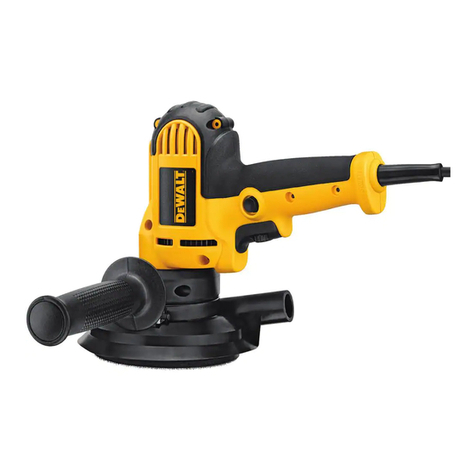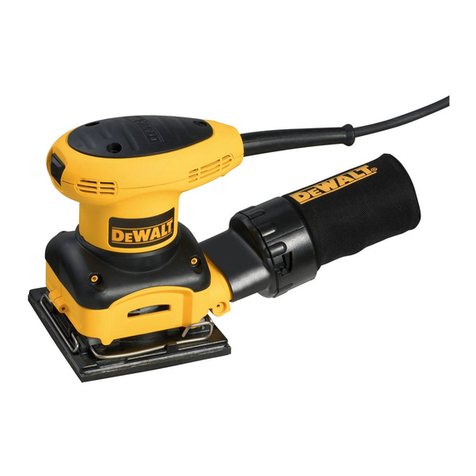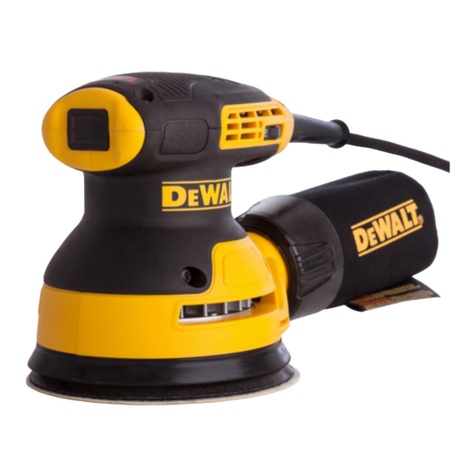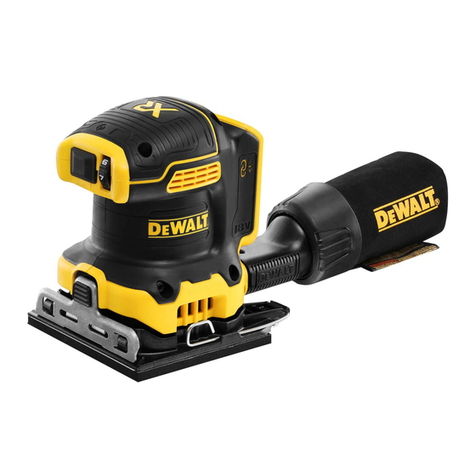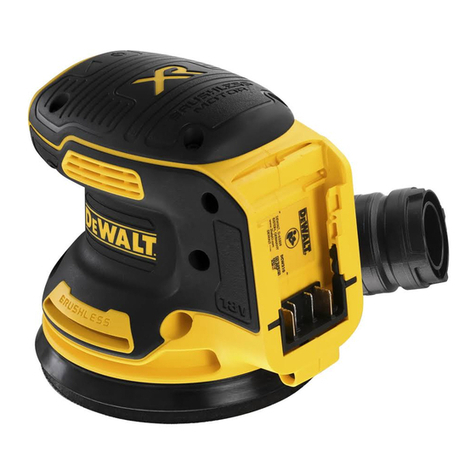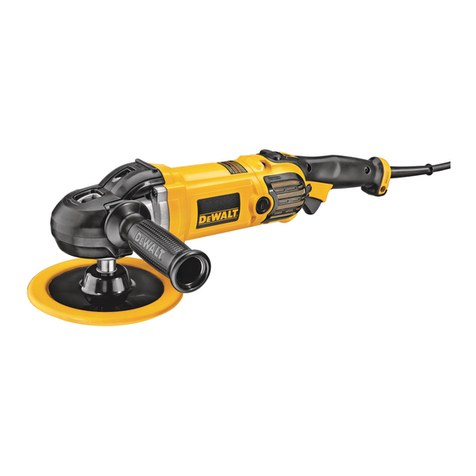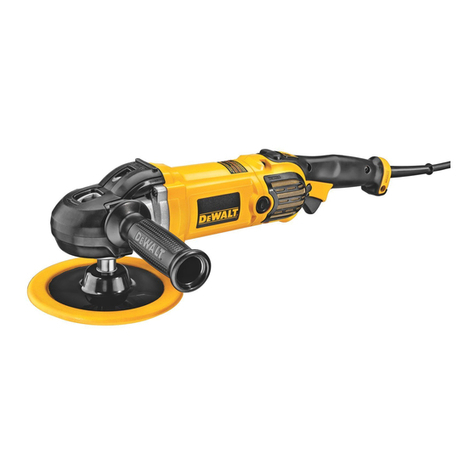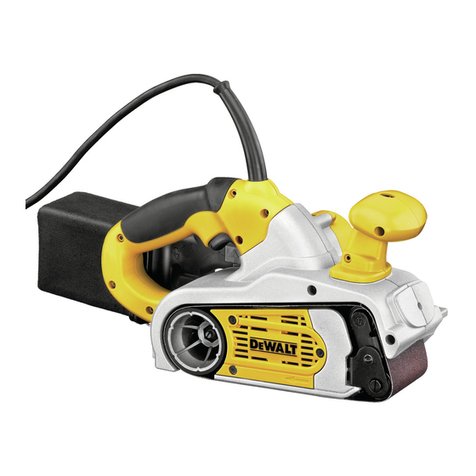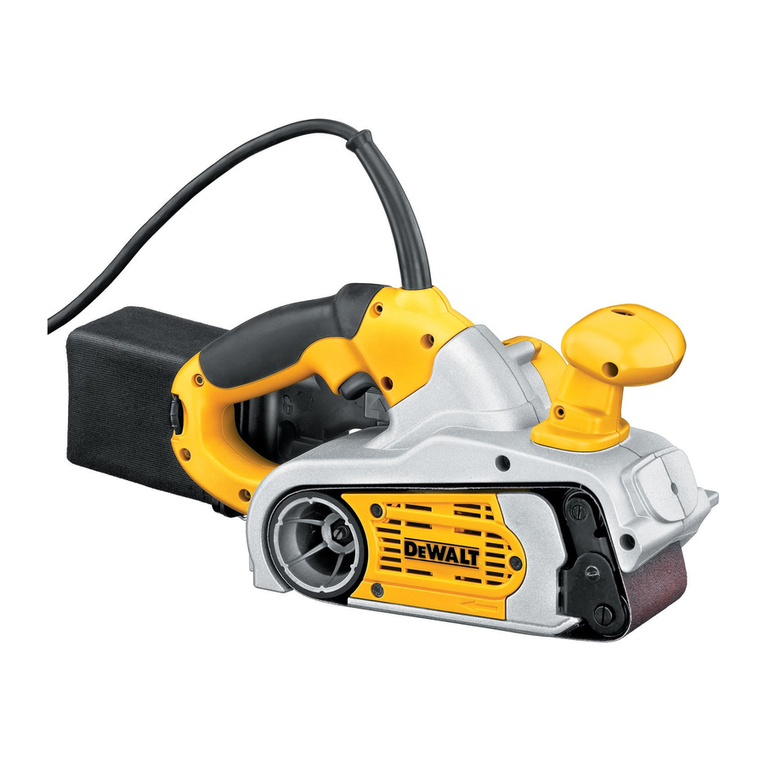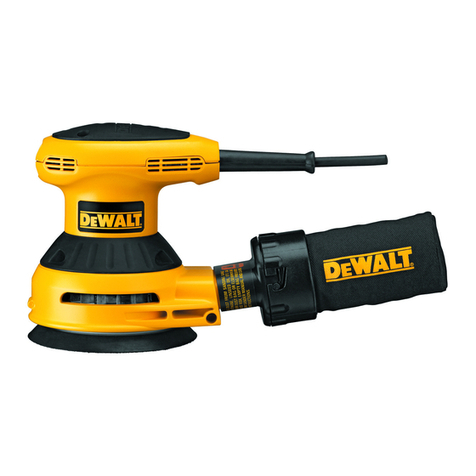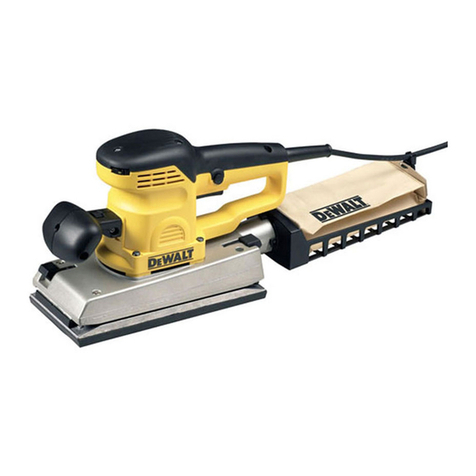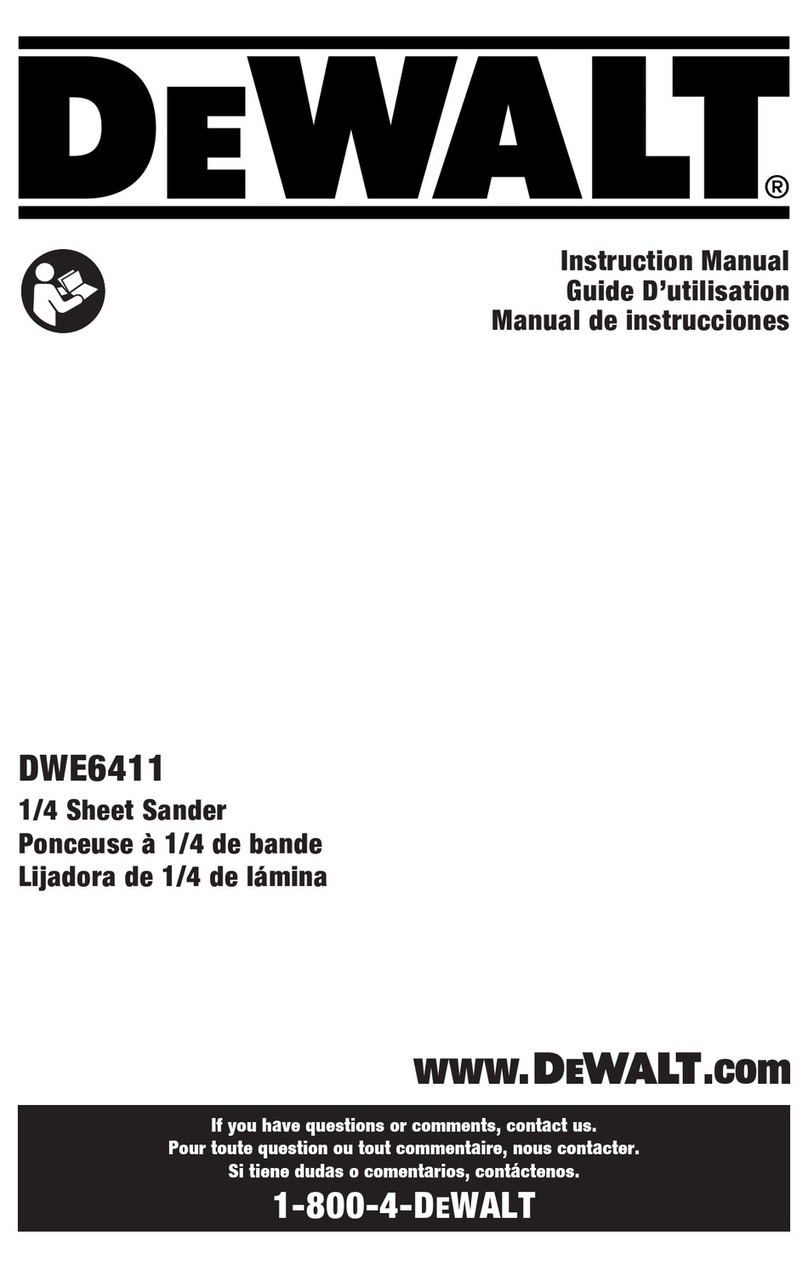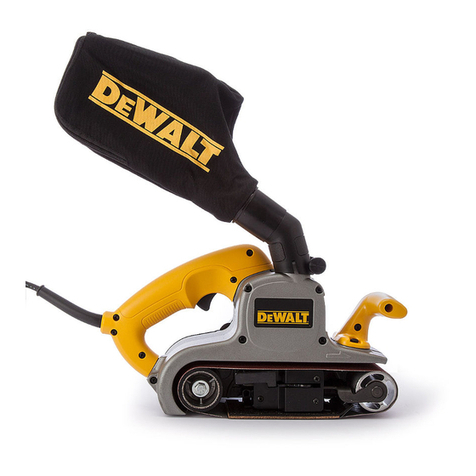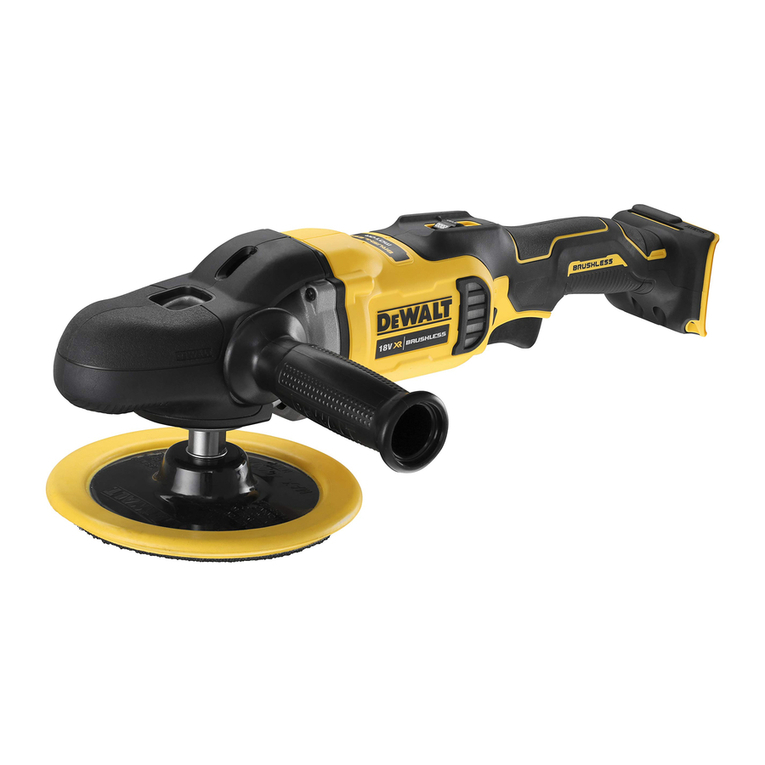
7
English
trigger switch needs to be cycled (depress the trigger switch, release,
then depress again) to restart the tool. Do not unplug the tool with
the trigger switch in the locked-on condition. Make sure the tool is
not locked on when plugging in. If the tool is plugged back in with the
trigger switch in the locked-on position, the tool will not run until the
trigger switch (B) is cycled as described above.
NOTE: The trigger switch can only be locked on with the tool running
at the maximum RPM designated by the speed control wheel (A).
Speed Control Wheel (Fig. 1)
The maximum speed of your tool can be changed by rotating the
speed control wheel (A) to the desired setting. The wheel incorporates
detents to prevent inadvertent wheel movement and to facilitate
speed selection. For added versatility, the switch may be locked in
its full on position and tool speed changed by means of the speed
control wheel (A) alone.
The electronic speed control not only lets you select the speed to suit
the job, but also helps to maintain that speed as you load the tool
by pressing down. It’s this feature, coupled with the variable speed
switch, that make this tool such a value.
The speed control wheel (A) can be set for any speed between 600
and 3500 RPM and the variable speed switch will then control tool
speed from zero to the wheel setting. For example: A control wheel
setting of 2200 RPM will allow the variable speed switch to operate
the tool between zero and 2200 RPM, depending on how far the
trigger is depressed. A wheel setting of 600 RPM would allow the
switch to operate the tool from zero to 600 RPM.
The electronic speed control feature comes into play whenever the
trigger switch is fully depressed and the tool is running at the selected
speed determined by the setting of the control wheel. As you load
the tool by pushing it down on the work surface, (with the trigger fully
depressed) the electronic circuit inside the tool will compensate for
the loading and maintain the selected speed. If the speed selected
by the control wheel is 2200 RPM, as in the example above, the tool
will maintain 2200 RPM, as it is loaded.
It is important to remember two things about electronic speed control:
1. The electronic speed control operates only when the trigger
switch (B) is fully depressed.
2. The effect of electronic speed control is much easier to observe at
lower speed settings (2600 RPM and below), than at high speeds.
As the tool approaches 3000 RPM, the effect is considerably less
dramatic.
Keep in mind that, with a conventional polisher running at a typical
no-load speed of 2400 RPM, the tool slows down to about 2000
RPM under a polishing load. Your DWP849X will continue to run at
2400 RPM (or any speed you select with the control wheel) as a load
is applied. Since it doesn’t slow down, the speed may be greater than
you’re used to, so some extra caution should be observed until you
get the “feel” of your polisher. If you feel the speed is too great, you
can, of course, slow the tool down with either the trigger switch or
the speed control wheel.
Spindle Lock Button (Fig. 1)
WARNING: To reduce the risk of serious personal injury,
turn tool off and disconnect tool from power source before
making any adjustments or removing/installing attachments
or accessories. Before reconnecting the tool, depress and
release the trigger switch to ensure that the tool is off.
In order to prevent the spindle of the tool from rotating while installing
or removing accessories, a spindle lock button (D) has been provided
in the gear head of the machine. To lock the spindle, depress and
hold the lock button. NEVER DEPRESS THE SPINDLE LOCK
BUTTON WITH THE TOOL RUNNING OR COASTING.
Wool Ingestion Shields (Fig. 1, 2)
The wool ingestion shields (I) are designed to reduce the amount of
wool, dust, and debris that gets ingested by the motor during normal
